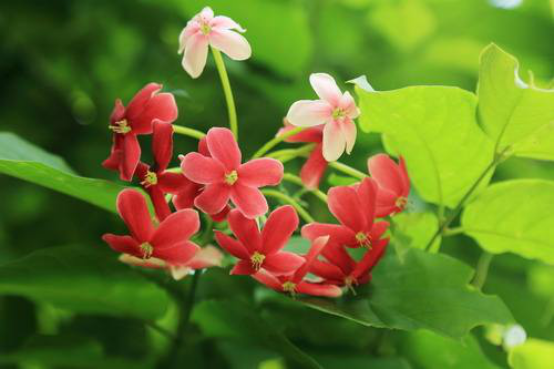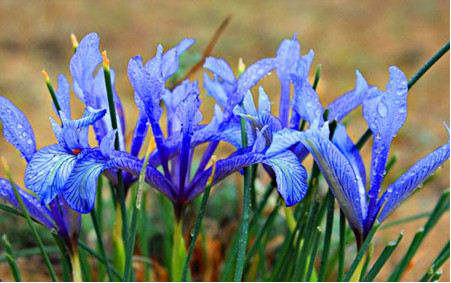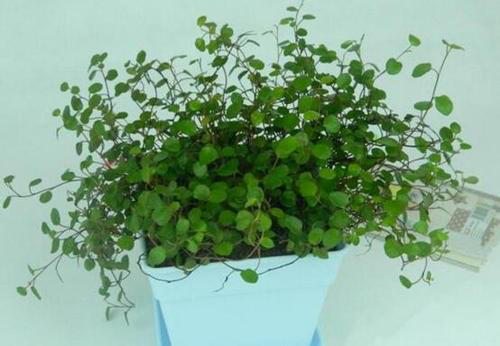Breeding method of quisqualis
The propagation methods of Quisqualia are seed propagation, sub-stump propagation and layering propagation.
1. Seed reproduction
Select mature and full fruit as seed (Kang Guo Quizizi can not be planted), in the lunar calendar 2~3 months spring sowing or 8~9 months autumn sowing, autumn sowing is better. Before sowing, break the tip of the seed shell, but do not hurt the rice, soak it in wet hot water (40℃~50℃) for 1~1.5 days to help it germinate. When planting, select sand, break the seeds upward, sow in the soil, row spacing 20 cm, plant spacing about 10 cm. Then cover it with river sand and grain chaff. After sowing, keep soil moisture and sprout after about 1 month. General seedlings 10~15 cm high can be transplanted, shift time should bring soil, only easy to survive. This method is used to reproduce more, but it takes a longer time, about 4 years after sowing before flowering.
2. Subdivision propagation
At the end of winter and the beginning of spring, healthy mother plants are selected, and the sprouts and roots are transplanted, and the fruits can be produced in about 3 years.
3, layering propagation
It is best to carry out in the spring and autumn of the lunar calendar. Cut off the tender vine tip of Quizizi, 1.70~200 cm long, coil it into a small circle, bury it in the cellar, leave 67 cm on the ground, or bury it horizontally with 2/3, let 1/3 expose the soil surface, but do not bury it upside down. This method grows faster and can bear fruit in 2 - 3 years.
The above three breeding methods, if planted in pieces, plant spacing and row spacing are generally about 3.3 meters, hole depth 34 cm, width 100 cm (sowing hole smaller, shallower), the soil at the bottom of the hole should be mixed fine, with manure or manure 50 kg as base fertilizer, fully mixed with soil, cultivation cover soil, and gently compacted.

The planting and maintenance methods of the gentleman are introduced here. Act quickly and create a unique balcony. Start with raising the gentleman!
Breeding method of quisqualis
Cuttage propagation of Quisqualis quisqualis
Quisqualia can carry out cuttage propagation, cuttage is easy to take root, so cuttage propagation is the most commonly used propagation method of Quisqualia. Quizunzi cuttage propagation, can be inserted branches, can also be rooted.
Branch cutting can be carried out in spring or autumn. The healthy branches of Quisqualia from one to two years old are cut as cuttings, about 20cm in length are cut, and the cuttings are inserted obliquely on the sand bed. Transplantation can be carried out in the second year.
Root cutting, carried out from December to January of the following year, digging out part of lateral roots of Quisqualia quisqualis far away from the main root, cutting into cuttings with a length of 20cm and a thickness of about 1 cm, inserting the cuttings on a seedbed, and transplanting one year later.
The layering propagation of Quisqualis
In the early spring season, select the strong long branches of Quisqualia, bend them and bury them in the soil, wait for them to take root, and take them down for transplantation after taking root. Quisqualia can be planted in the middle and late February or rainy season, and enough water should be poured after planting.
Seed propagation of quisqualis
Quizunzi for sowing and reproduction, spring and autumn sowing can be, autumn sowing is better, seeds with the harvest with sowing, can also be stored seeds, the next spring for sowing.
Quisqualia seeds need a long growth cycle to reproduce. When sowing and propagating, the tip of Quisqualis seed is
Face down, insert obliquely into the soil, cover with soil, keep the soil moist, and germinate in about a month. When the seedlings of Quizizi grow to about 10cm, they can be transplanted with soil.
Propagation of Quisqualis spp.
In addition to cuttage, sowing and layering, Quisqualia can also be divided. In winter and spring season, the root part of Quisqualia plant is transplanted, and generally it can bear fruit in about 3 to 5 years.
The fruit of the tree is the fruit of the tree.
Gentleman is a relatively well-known plant, flowers small, flowers bloom for white and then turn red, evil is good-looking, so like people will be planted at home and other places. Let's take a look at the breeding methods and efficacy knowledge of Quizunzi.
Breeding method of quisqualis
Quizunzi propagation methods are quite many, available sowing, cuttage, sub-plant or high pressure and other ways can be, spring and autumn are suitable for sowing. Cuttings are easy to root and are the most commonly used propagation method.
1. Cutting propagation
There are branch cutting method and root cutting method. Branch insertion method, February-March or September-October, cut 1-2 years old healthy branches as cuttings, cuttings length of 20-25 cm, obliquely inserted in the seedbed, transplanted in the following year. Root cutting method: from December to January to February of the next year, part of lateral roots 30 cm away from the main root are cut and dug out, and cuttings with a diameter of more than 1 cm are cut into cuttings about 20 cm long, which are cut into seedbeds and transplanted one year later.
2, layering propagation
2-3 month selection of strong long branches, bending buried in the soil, or wave layering, rooting after the interception of transplantation. The seedlings propagated by the above method are planted in the middle, late or rainy season of February. Row spacing 3.3m×2.3m, manure was applied in the hole, mixed with soil evenly, one seedling was planted in each hole, and roots were fixed by watering after planting.
The effect of the gentleman.
1. Dry and mature fruits of Quisqualia are used as medicine. They are sweet in taste, warm in nature, nontoxic, return to spleen and stomach meridian. They are mainly produced in Fujian, Hunan, Yunnan, Guangdong, Guangxi, Jiangxi, Guizhou and other places. Traditional Chinese medicine classified as anthelmintic medicine and spleen medicine. Chinese medicine name Quizizi, originally published in Kaibao Materia Medica, can kill insects, eliminate accumulation, spleen, anthelmintic, anti-skin fungi and other effects, mainly for abdominal pain, abdominal distension, diarrhea, infantile malnutrition, milk food stagnation, etc. Modern clinical application for driving ascaris, pinworm, tapeworm and external use for various skin fungal infections, trichomonas vaginalis, etc.
2. The leaves of Quizunzi are used as medicine, with pungent taste, mild nature, spleen and stomach meridians. Traditional Chinese medicine classifies them as anthelmintic medicine. Chinese medicine named quizunzi leaves, with insecticidal detoxification, qi spleen and other effects, indications of children gangrene, child accumulation, abdominal distension, furuncle ulcer and so on.
3. The root of Quizunzi is used as medicine. It tastes pungent and bitter, and its nature is flat. It returns to spleen and lung meridians. It is classified as spleen invigorating medicine and lung dispersing medicine in traditional Chinese medicine. The Chinese medicine is named Quizunzi Root, which has the effects of lowering adverse flow, relieving cough, killing insects and invigorating spleen, etc. It is mainly used for cough, dysentery, insect accumulation, etc.
- Prev

Breeding methods of Iris officinalis
The seeds of wild Iris are very vigorous. Usually after the fruit is ripe in August and September, the seeds will float away with the wind and then fall to the ground to grow and germinate on their own. If it is artificial propagation, the survival rate of direct sowing is relatively low. Therefore, artificial cultivation of Iris lanceolata is often propagated by transplanting.
- Next

Propagation method of Cymbidium paniculata
The main results are as follows: 1. Cutting propagation of Cymbidium should be carried out in spring and summer, which is warmer in spring and autumn and suitable for plant growth. Cut the pruned branches so that you can cultivate a luxuriant thousand-leaf orchid. But in the process of cutting, we must pay attention to the cutting time.
Related
- Fuxing push coffee new agricultural production and marketing class: lack of small-scale processing plants
- Jujube rice field leisure farm deep ploughing Yilan for five years to create a space for organic food and play
- Nongyu Farm-A trial of organic papaya for brave women with advanced technology
- Four points for attention in the prevention and control of diseases and insect pests of edible fungi
- How to add nutrient solution to Edible Fungi
- Is there any good way to control edible fungus mites?
- Open Inoculation Technology of Edible Fungi
- Is there any clever way to use fertilizer for edible fungus in winter?
- What agents are used to kill the pathogens of edible fungi in the mushroom shed?
- Rapid drying of Edible Fungi

